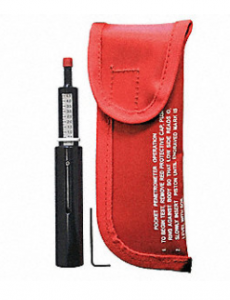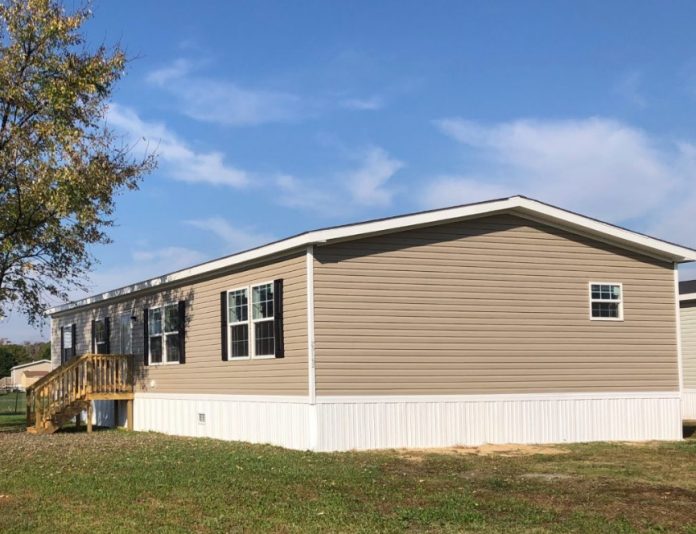What is the Pocket Penetrometer, and how is it used?
In 1989, George Porter came across the pocket penetrometer.
He had been in the manufactured housing business for about two decades already, and like many people, he spent much more time considering the actual home than the space on which it might sit.
“Might” is the operative word here.
“The executive director of Pennsylvania association at the time said ‘Why don’t you write a course on how to set up a manufactured home?’
“I thought this would take most of the afternoon,” Porter recently confessed. “About a year later I had most of it figured out.”
There is a lot that goes into siting a home, not the least of which is soil density. In other words, how consistently firm is the soil on which the home’s piers will rest? And will it hold the home over time, or “might” it not?
It’s All About the Soil
“What I knew about soil at the time was that it was ‘dirt’ and there were two kinds, wet and dry. Wet is called mud,” said Porter, who operates Manufactured Housing Resources, Inc., and trains scores of manufactured housing professionals on proper home installation.
The Manufactured Housing Institute education division offers a 12-hour training program developed and delivered by Porter. The content offered in the program is the latest and most relevant information for home installation on a state-by-state basis.
Suffice to say, George Porter has learned quite a bit about soil density and all else involved with placing a manufactured home.
But back to the item at hand, the pocket penetrometer.

What Is A Pocket Penetrometer?
When Porter came to learn everything from Andisol to Vertisol in the world of soils, he was told by industry folks and manual writers that a very important step in the home siting process is figuring out load-bearing capacity; but how?
Most presentations looked beyond this practical bit of fieldwork. And no one he knew was testing soil density, with or without a device that could help.
Asking around, he was directed toward a large, unwieldy machine that sat on a tripod and utilized a heavy blow-cap to would drive a spike in the ground. Counting the number of blows required to reach a certain depth offered a density reading.
Porter said he recalls the demonstration, thinking, with hand on chin, “This isn’t going well.”
Where the Manufactured Housing Industry Turned
Shortly after, Porter was turned on to the device most people in the industry use today – the pocket penetrometer.
Of all the ways to test soil – including hiring an expert or sending a sample to a lab – use of this diminutive device is by far the most time and economically efficient. And, today, most install manuals for new homes call for the use of a pocket penetrometer.

If you buy one, it should cost less than $150, and come in a small carrying case that includes instructions for use. Depending on brand, new devices can be found for $50.
To take the middle ground, AMS makes a pocket penetrometer that’s sold here and other places for about $90.
A pocket penetrometer measures soil for the number of tons it will support by square foot. Many times the references in home installation manuals hinge on pounds per square foot. So, a conversion or two may be necessary, but knowing that 2,000 pounds is equal to one ton is the essential element, and will put you on sturdy ground for finding the needed answers.
How Is the Pocket Penetrometer Used?
“You press the pocket penetrometer into undisturbed soil and you try to pick a patch that’s unaffected by the sun and most similar to the area where you’ll place footings,” Porter said. “This means you may need to remove some baked topsoil before you get to the moist soil that’s common to the area.
“In a state like Michigan, because of the frost line, you can’t just place a home on top of the ground. It’s not a good idea and you won’t pass inspection either,” he reminded.
The user presses the penetrometer into the soil. When this is done, the spring-loaded pin in the ground also presses up into the handle of the device. When the pin reaches the grooved part of the handle ¼” up, a load bearing reading between one ton and four tons is made evident by the red ring on the barrel. That reading correlates to a specific type of setup system for installation of the home.
Be mindful that a penetrometer only works on soil. An attempt to measure density on top of gravel, for instance, will render a false reading.
Where to Purchase a Pocket Penetrometer
Today, a plastic pocket penetrometer is available. Porter uses the same metal device he purchased when he began studying soil.
“That was a long time ago,” he said. “The plastic one is not that much cheaper, but the paint comes off, and if you step on it, you’ll crack it. I don’t know what you could do to break the metal one without trying real hard.”
A pocket penetrometer can be purchased at the local supply store, the same place you buy anchors and skirting. They also can be picked up through the industry catalogs, like Oliver and Westland Distributing.













